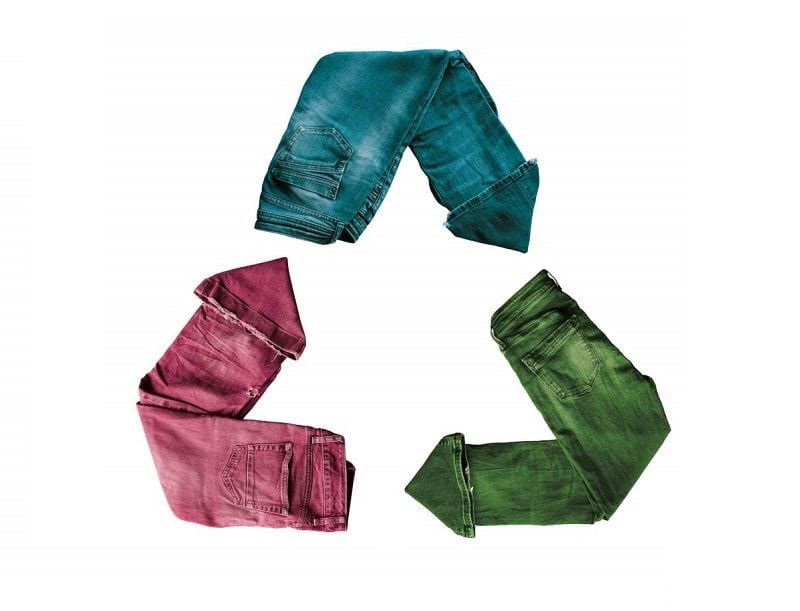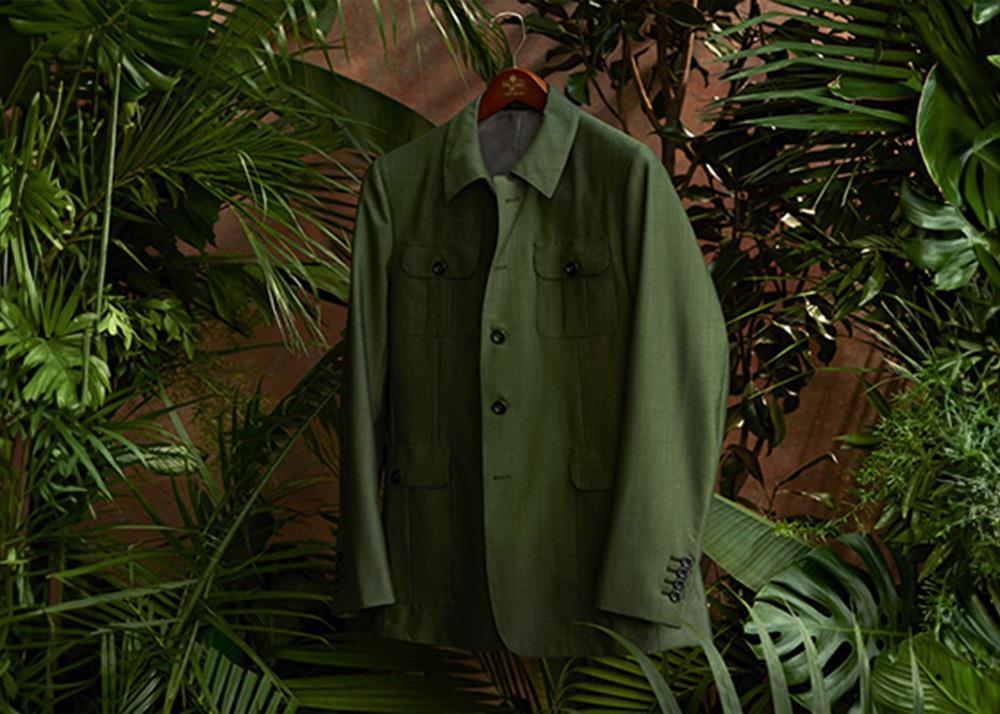Cape Town Sustainable Fashion Week: Highlighting Environment-friendly Innovations
Cape Town Sustainable Fashion Week: Highlighting Environment-friendly Innovations
Blog Article
Keep Ahead of the Contour by Exploring Cutting-edge Fashion Fads
In a market as vibrant as fashion, remaining in advance entails greater than simply adhering to present fads-- it requires an exploration of innovation. Smart textiles, for example, are changing garments into functional masterpieces, while 3D printing is transforming style processes with its customizable, waste-reducing capacities. As sustainability ends up being a cornerstone, innovations like environment-friendly materials and circular fashion methods are improving ecological responsibility - Cape Town Sustainable Fashion. Additionally, the convergence of technology and style proclaims a brand-new period of customer involvement. Just how, after that, can these emerging fads redefine the future of fashion, and what implications do they hold for brand names seeking to grow in this progressing landscape?

Accepting Smart Textiles
Over the last few years, the style market has seen a transformative shift with the assimilation of clever fabrics, a sophisticated innovation that blends innovation with textile. This advancement stands for not just a blend of looks and functionality but likewise a considerable jump towards sustainability and personalization in fashion. Smart textiles, additionally referred to as e-textiles, installed innovative electronic devices such as sensing units and conductive strings within the fabric, allowing garments to connect with the user or the setting.
These fabrics are made to keep an eye on physiological criteria, such as heart price or body temperature level, giving real-time health analytics. Beyond health applications, smart textiles are additionally being made use of for flexible clothes, which can transform shade or pattern in action to environmental stimuli, hence using a vibrant style experience.
Additionally, the advancement of energy-harvesting textiles that generate power from movement or sunshine is leading the way for self-sufficient wearable modern technology. This advancement is attracting environmentally conscious consumers and developers intending to decrease the eco-friendly impact of fashion. As research and advancement in this field advancement, clever textiles are anticipated to end up being increasingly common, reshaping the landscape of modern-day fashion with their multifunctional capabilities.
The Rise of 3D Printing
Reinventing the manufacturing landscape, 3D printing has actually arised as a game-changer in the garment industry. This advanced technology has actually enabled developers to push the borders of creative thinking, creating detailed and personalized garments that were previously unbelievable. By leveraging digital style and additive manufacturing, 3D printing facilitates the production of complicated geometries and patterns, allowing designers to trying out brand-new structures and frameworks.
A notable advantage of 3D printing in style is its ability to create on-demand, minimizing waste and minimizing supply demands. This performance not only enhances production processes however additionally allows for rapid prototyping, enabling designers to bring their visions to life in a much shorter duration. In addition, 3D printing sustains modification somewhat unequaled by standard approaches, offering distinct styles and individualized fits tailored to individual consumer preferences.
The surge of 3D printing has actually additionally equalized style, making it accessible to arising developers that can now fabricate top quality pieces without considerable economic investment in typical production framework. As modern technology remains to advancement, the garment industry is positioned to harness the complete possibility of 3D printing, discovering brand-new products and methods that will most certainly redefine exactly how fashion is conceived and generated.
Lasting Fashion Advancements
As the fashion business comes to grips with journalism requirement for environmental responsibility, lasting style technologies have emerged at the leading edge of transformative modification. The expanding recognition of eco-friendly impact has fueled a shift towards more eco-conscious practices and products. Brand names and designers are currently prioritizing sustainability, integrating techniques that reduce waste and lower carbon impacts.
One substantial development is the surge of round style, which emphasizes recycling and upcycling to extend the lifecycle of garments. This approach not only reduces waste but likewise urges consumers to embrace a more mindful approach to clothes consumption.
Another innovation depends on the fostering of cutting-edge dyeing methods that use waterless procedures or natural dyes, consequently minimizing the large quantities of water and chemicals typically utilized in textile dyeing. In addition, developments in biotechnology have brought about the production of lab-grown natural leather and fabrics, using cruelty-free and environmentally friendly choices to traditional products. With these pioneering initiatives, the apparel industry is making meaningful strides in the direction of a more sustainable future.

Tech-Integrated Clothing
Tech-integrated clothing represents an innovative blend of fashion and modern technology, reshaping exactly how people engage with their apparel. This cutting-edge domain is marked by the inclusion of smart textiles and ingrained digital elements, enhancing her latest blog both functionality and visual appeal. From health and fitness trackers embedded in sportswear to heated jackets controlled using mobile phone applications, tech-integrated garments uses customers extraordinary comfort and versatility.
Pioneering brand names are driving this fad, focusing on developing garments that react to environmental stimulations or user commands. For example, some garments can change shade or pattern in reaction to temperature shifts, while others include biometric sensors to monitor health metrics like heart rate or stress and anxiety levels. The smooth assimilation of modern technology right into fabrics also reaches ecological sustainability, with initiatives to create self-cleaning textiles or garments that adapt to weather, therefore reducing the need for several layers.
Furthermore, the introduction of wearable modern technology is not just limited to clothing yet reaches devices like watches and eyewear, further expanding the range of tech-integrated fashion. As the sector proceeds to innovate, the capacity for modification and personalization in garments expands, supplying consumers one-of-a-kind, tech-enhanced fashion experiences that satisfy their specific click to find out more needs and preferences.
Future of Virtual Fashion
In the last few years, the future of virtual style has actually become a transformative force within the market, leveraging innovations in digital innovation to redefine just how fashion is developed, experienced, and consumed. By integrating increased reality (AR), virtual truth look at these guys (VIRTUAL REALITY), and 3D design devices, developers can now craft immersive and interactive experiences that transcend typical style boundaries. Virtual style permits the development of garments that exist entirely in electronic settings, using endless possibilities for development without the restrictions of physical manufacturing.
This electronic change not only presents opportunities for innovative expression yet additionally addresses sustainability worries inherent in typical fashion methods. Cape Town Sustainable Fashion. By eliminating the demand for physical sources, digital style reduces waste and lessens carbon footprints. Additionally, the surge of online style lines up with the boosting customer need for one-of-a-kind and personalized experiences, as online garments can be customized and tailored to specific preferences with ease

Final Thought
The style sector's future lies in the assimilation of lasting practices and innovative innovations. Virtual style is poised to redefine customer interactions.
In recent years, the style market has experienced a transformative shift with the integration of clever textiles, a sophisticated technology that blends technology with textile.As the fashion sector grapples with the pushing demand for environmental responsibility, sustainable fashion technologies have arised at the forefront of transformative change.In recent years, the future of digital style has emerged as a transformative force within the industry, leveraging advancements in digital modern technology to redefine exactly how style is created, experienced, and eaten. The surge of virtual style straightens with the raising customer demand for tailored and distinct experiences, as online garments can be customized and customized to individual choices with simplicity.
The style industry's future lies in the integration of lasting techniques and cutting-edge modern technologies.
Report this page